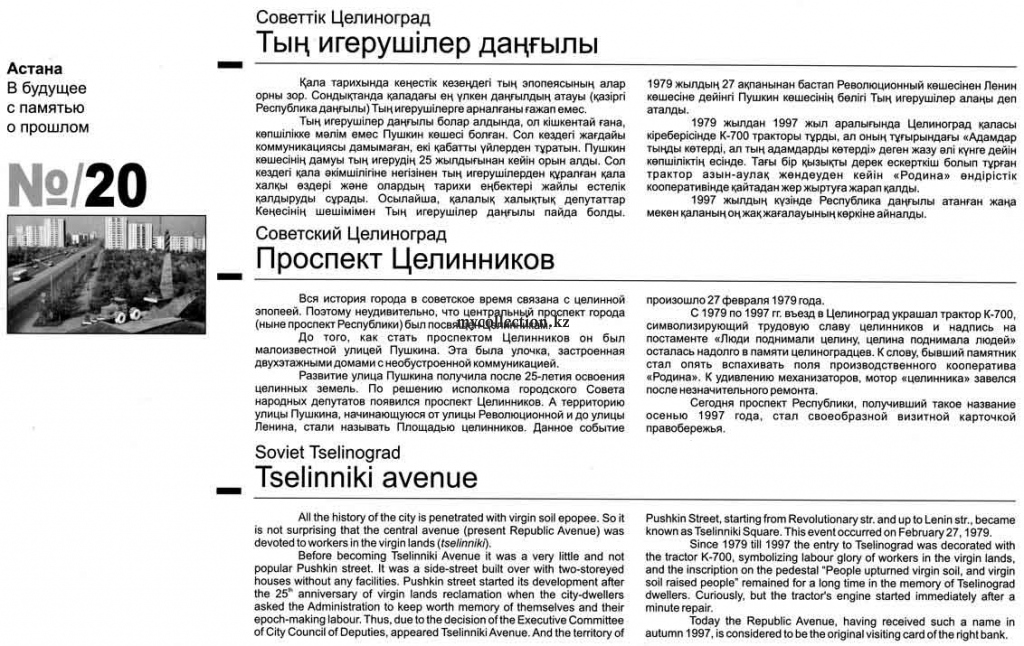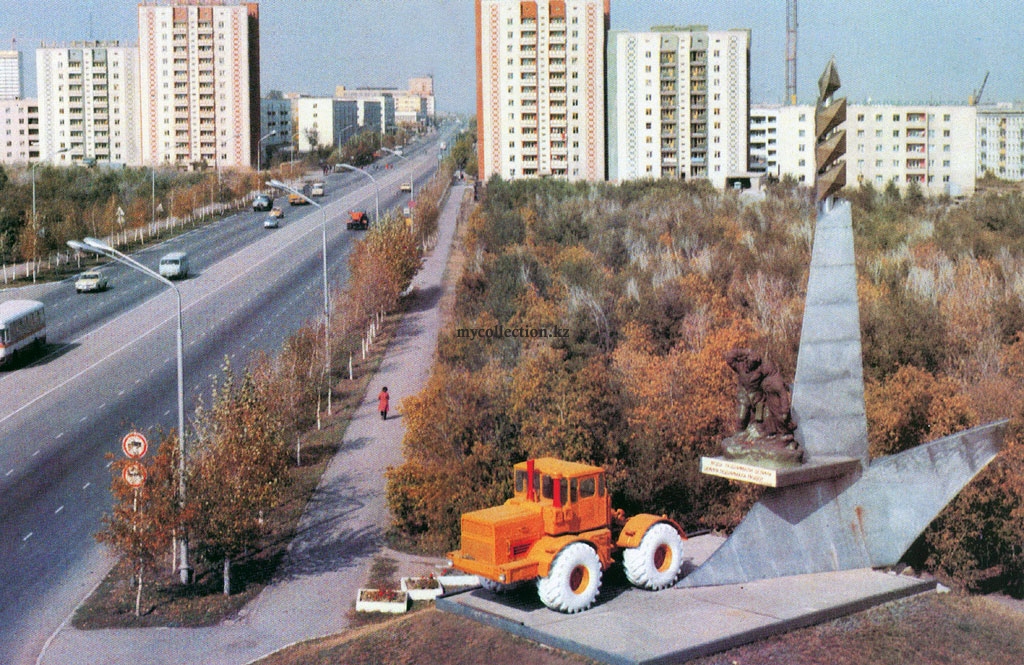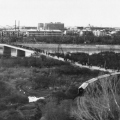

Проспект Целинников
Вся история города в советское время связана с целинной эпопеей. Поэтому неудивительно, что центральный проспект города (ныне проспект Республики) был посвящен Целинникам.
До того, как стать проспектом Целинников он был малоизвестной улицей Пушкина. Эта была улочка, застроенная двухэтажными домами с необустроенной коммуникацией.
Развитие улица Пушкина получила после 25-летия освоения целинных земель. По решению исполкома городского Совета народных депутатов появился проспект Целинников. А территорию улицы Пушкина, начинающуюся от улицы Революционной и до улицы Ленина, стали называть Площадью целинников. Данное событие произошло 27 февраля 1979 года.
С 1979 по 1997 гг въезд в Целиноград украшал трактор К-700, символизирующий трудовую славу целинников и надпись на постаменте «Люди поднимали целину, целина поднимала людей» осталась надолго в памяти целиноградцев. К слову, бывший памятник стал опять вспахивать поля производственного кооператива «Родина». К удивлению механизаторов, мотор «целинника» завелся после незначительного ремонта.
Сегодня проспект Республики, получивший такое название осенью 1997 года, стал своеобразной визитной карточкой правобережья.
- Теги
- Akmolinsk, Astana, Kazakhstan, photo, Tselinograd, Акмолинск, Астана, К-700, Казахстан, Кировец, памятник, проспект Республики, проспект Целинников, Целиноград
- Альбомы
- Посещения
- 5205
- Средний балл
- 3.72 (Оценок: 46)
- Оценить это изображение


 Посмотреть обратную сторону
Посмотреть обратную сторону
